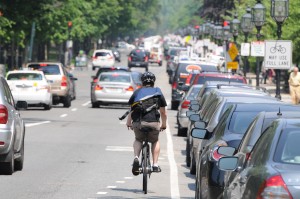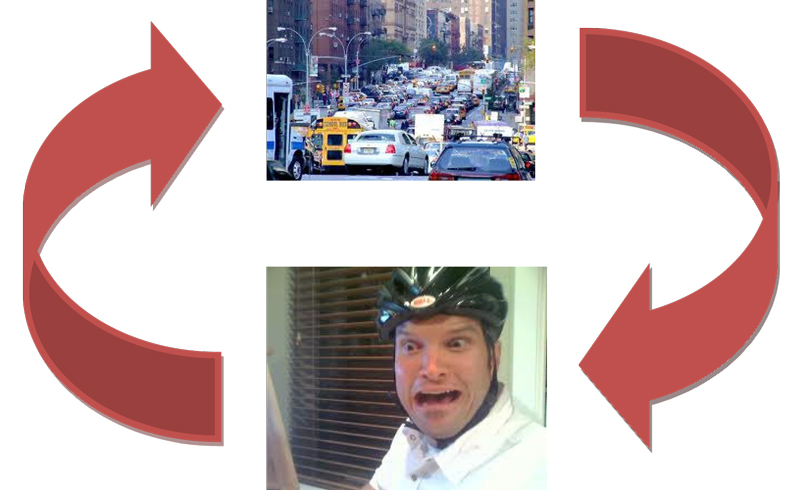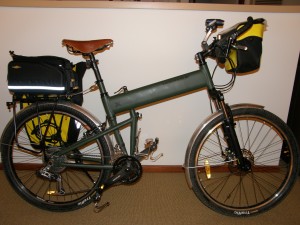 As we’ve been discussing recently, it’s not easy to be a cyclist on the streets of an American city – cars and bikes are too often competing for the same space, bikes are travelling on roads that have not been designed with them in mind (e.g. bike lanes that place riders squarely in the dreaded door zone), and patience is seemingly thin on the ground as everybody rushes to get wherever it is they’re going.
As we’ve been discussing recently, it’s not easy to be a cyclist on the streets of an American city – cars and bikes are too often competing for the same space, bikes are travelling on roads that have not been designed with them in mind (e.g. bike lanes that place riders squarely in the dreaded door zone), and patience is seemingly thin on the ground as everybody rushes to get wherever it is they’re going.
In his recent Velonews column titled “Crowded streets can lead to dangerous sidewalks”, Charles Pelkey suggests that it’s precisely this kind of ambiguously shared space that makes travel that much more dangerous for everyone:
Urban streets around the world are becoming meaner….The problem is exacerbated when those who would normally feel comfortable riding a bike find themselves worrying about their own safety and opt to get in a car. Ensconced in a motorized steel cage, that potential cyclist now adds to the crowding on the streets, instead of reducing it. That further adds to traffic and, in turn, may cause a slightly braver cyclist to reconsider his choice, which in turn adds to crowding.…In order to limit risks for cyclists and pedestrians, urban environments must provide reasonable – and generally segregated – options for foot, pedal-powered and motorized traffic.
Pelkey describes the cycle perpetuated by inadequate infrastructure: more people feel unsafe riding their bikes, so more people choose cars, so more people feel unsafe, so more people choose cars.
If he’s right, then in order for cycling to be a viable option for all but the very bravest (or craziest), we need to make more bike-only space available by allocating public funds for this kind of project. Because by the same reasoning, as the appropriate infrastructure becomes available, more people will feel safe riding their bikes, so more people will choose to ride, so more people will feel safe, so more people will chose to ride. Roads become less crowded and therefore, safer for everyone. A new kind of cycle…
But better infrastructure can lead to more than one kind of new cycle. In addition to changing patterns of behaviour, it also can also make people consider bicycles in a new way. As a recent ad campaign by a certain car share company illustrates, there’s a misperception that it’s really difficult to transport anything except yourself on a bicycle. Of course, your standard two-wheeler is built for just one person, but there are all kinds of baskets, racks, and trailers that can be attached to a bicycle, as well as cargo bikes that come with the carrying capacity built in; without too much trouble, you can find a way to transport anything from your briefcase to your kids to a dinette set on or with your bicycle. The limiting factor when it comes to getting around every day on a bicycle is not the bicycle – it’s the kind of roads that are available for use…and occasionally, the weather.
What factors most into your decision to ride a bike or use another mode of transportation? Would improved infrastructure impact your choices? Or the kind of riding you do? If there were more/better bike lanes, would you be more inclined to ride more? Maybe with a folding bike that easily combines with other forms of transportation? Or would you consider getting a trailer or a cargo bike?



